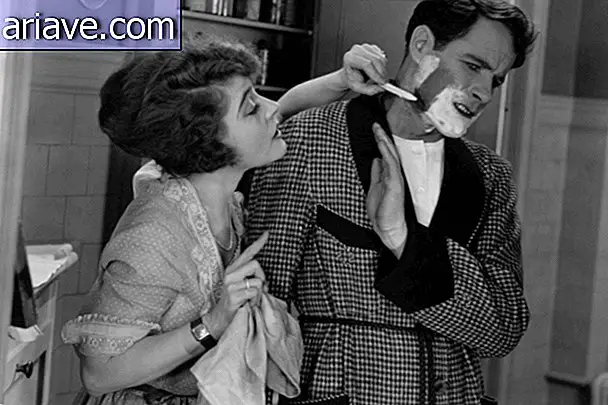5 symbols with completely different meanings than you might think
You may not be very attached to the symbols around you all the time, but if you start to notice, you will find that your field of vision is constantly affected by the presence of images that represent something. This goes for logos, religious symbols, road signs, gestures and a multitude of other things.
And it is not from today that we use symbols to represent beliefs, concepts, names and people. Mankind has been doing this for a long time, and when a symbol is secular or millennial, it often loses its original meaning, as you can see below, which already have very different meanings. Check out:
1 - Finger Horns

The gesture made by those who enjoy the good old metal was popularized by Ronnie James Dio, who might not have noticed, but was creating almost an extension of the identity of those who really like this style of music.
The gesture, however, has been used for a long time and, oddly enough, the horns that are now seen by some as a satanic symbol had the opposite meaning: known as “corna”, the gesture was used as a way of demonstrating repulsion for negative things and the "bad thing" in general.
And you know what? When the musician first used the gesture, he already knew that it had nothing to do with any satanic invocation, after all his grandmother had explained to him that the symbol was almost a request for peace. So, did you know that?
2 - The symbol of peace

If you know a little about the peace and love movement of the 1960s, you probably remember that the symbol above was the mark created by Woodstock lovers. Only not.
The icon was actually created by Gerald Holtom, with the intention of delivering a message on nuclear disarmament in Britain. According to Holtom, the drawing is the representation of himself in despair, his hands down and a circle around his own body.
Although the author of the icon, Holtom never registered the copyright of his work and it was not long before the symbol had other interpretations, the most popular of which is peace. Some also believe that it represents an inverted satanic cross, but this is nothing but meaningless speculation.
3 - The Caduceus

The symbol you see above, also known as the Hermes Badge, is commonly used by members of the medical and health community at large. The design is deciphered like a pair of wings and coiled snakes, right? Okay, but not quite the health it represents.
In fact, the medical symbol is the Asclepius Staff, which is also a pair of wings, but with only one serpent coiled to it. Asclepius was the Greek god of medicine and healing, so his symbol is related to health.

Hermes Emblem was chosen by the United States Army Medical Corps over 100 years ago, based on the decision of an officer who eventually got confused and changed the symbols. This is why the Caduceus is the most prevalent symbol, especially in North America. In other parts of the world, the symbol is used to represent commerce, after all Hermes was the patron of merchants and traders.
4 - The skull with the crossbones

Come on: when you see a skull over two crossbones, what is the first thing that goes through your head? If you have thought of anything related to any kind of poisonous or dangerous substance, you are right, and when there is that sign in some element, you better stay away from it.
The same symbol was also used by pirates, who stamped the image on their flags, although this was another generic choice, after all every good pirate had his own symbol and his own flag.
What you should not imagine is that the symbol began to be used in Spain as a way of identifying cemeteries. To this day it is possible to find this representation in churches, chapels and, of course, Spanish cemeteries. It was for this relationship with death that the pirates adopted the symbol, including. It was a way of "imposing respect."
5 - The swastika

Few symbols are as strong as the swastika, which, embroidered in Nazi uniforms, reminded everyone of the principles of Hitler's policy.
In fact, the swastika, also known as the Gammadion Cross, is one of the oldest symbols in the world and has even been used in religions such as Buddhism, Hinduism and Jainism, and was used by ancient civilizations such as the Greeks, Egyptians, Romans and Celts.
For Hinduism, where some of the oldest representations of the symbol come from, the swastika represents the god Vishnu to this day. An interesting curiosity: the clockwise "turning" swastika represents Vishnu and counterclockwise represents the god Kali.
In more modern times, the swastika was used several times before Nazism, even in Danish Carlsberg beer and the Finnish Air Force.











